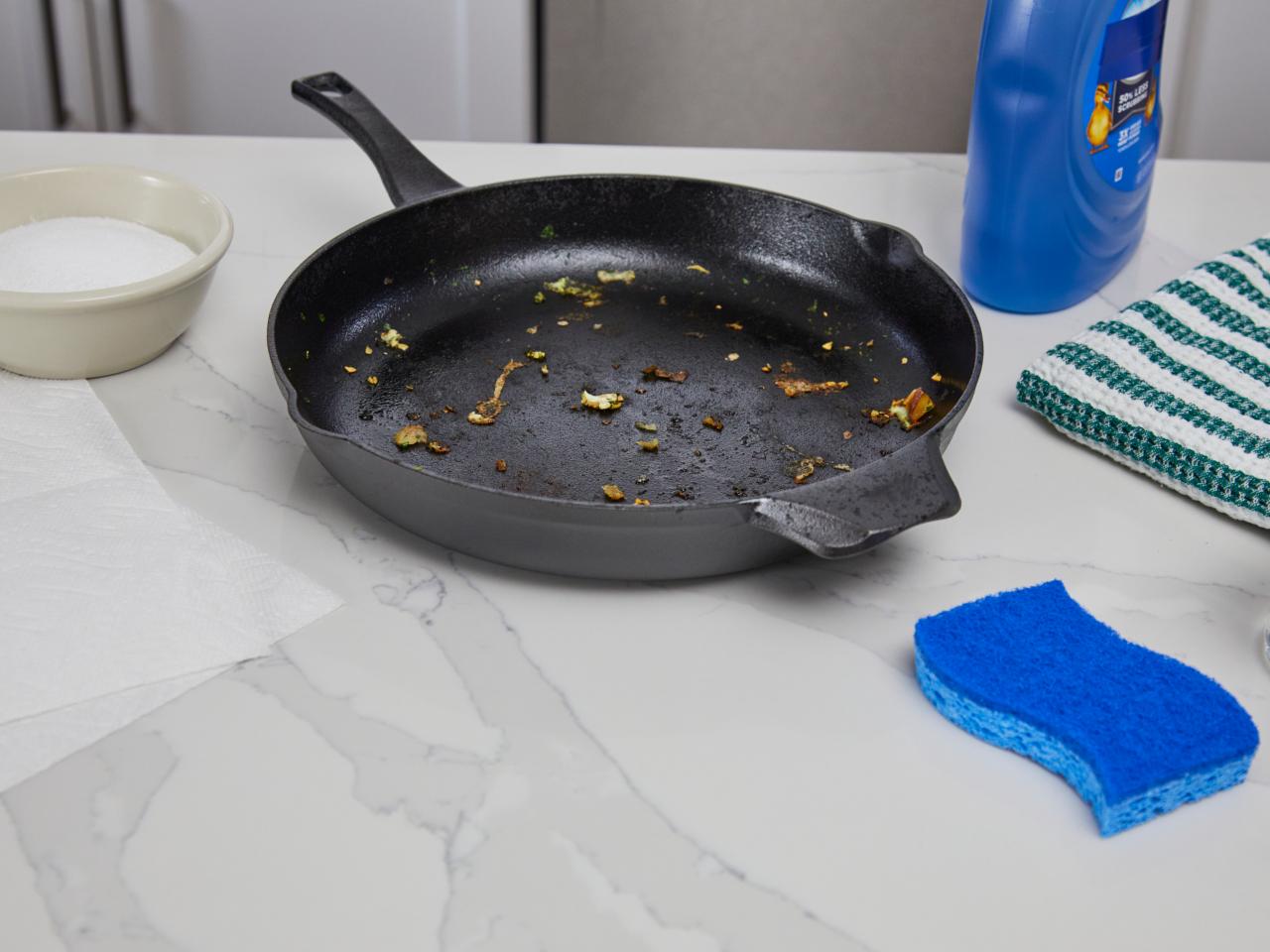
Cast iron pans are a beloved kitchen staple, revered for their versatility, durability, and unmatched ability to retain and conduct heat. However, a common mistake many make in their maintenance is cleaning them with soap and water as one would with other cooking pans. This is a misconception that can strip the cast iron of its seasoning—the very thing that gives it a natural non-stick surface and protects it from rust. Understanding the right way to clean and care for your cast iron will ensure it lasts a lifetime, turning out delectable dishes every time it is used.
Understanding Cast Iron Maintenance
To maintain the integrity of a cast iron pan, it’s important to follow specific cleaning and reseasoning processes. Here is the right method to clean cast iron pans, keeping them in top-notch condition for years to come:
1. Wipe Down Immediately After Use
The best time to clean a cast iron pan is shortly after cooking, while it’s still warm. Use a stiff brush or a plastic scraper to remove food particles. If needed, you can use a small amount of water, but do this while the pan is still warm to help loosen any bits stuck to the surface.
2. Use Salt For Tough Residues
For stubborn bits of food, pour a handful of coarse salt into the warm pan. The abrasive nature of the salt works as an excellent scouring agent. Use a damp sponge to scrub the pan with the salt. This method helps to preserve the seasoning by effectively scraping away residue without the need for soap.
3. Rinse with Warm Water
After scrubbing, rinse the pan with warm water. Never soak cast iron in the sink, as prolonged exposure to water can lead to rusting. If you’ve used salt, make sure to rinse thoroughly so no granules are left behind that could scratch the pan’s surface.

4. Dry Promptly and Completely
Once the pan is clean, dry it immediately with a towel to prevent rust. To be sure that it’s completely dry, place it on a stovetop over low heat for a few minutes. This evaporates any residual moisture. Remember, even a small amount of leftover water can lead to rust.
5. Apply a Light Coat of Oil
With the pan warm and dry, apply a light coat of cooking oil to the surface. Use a paper towel to coat the pan lightly—this step is critical to maintaining the seasoning. Once oiled, return the pan to the stovetop on low heat for a few minutes or place it inside a preheated oven to allow the oil to penetrate and seal the iron, fortifying the seasoning.
6. Store Properly
Always store the pan in a dry place. If stacking other pans on top of it, place a paper towel or a liner in between to prevent scratches and to allow air circulation, which helps prevent moisture build-up and rust.
By adopting these simple steps, not only will you extend the life of your cast iron pans, but you’ll also improve their cooking performance over time. The avoidance of soap isn’t a quirky kitchen myth; it’s an essential part of caring for these durable pieces of culinary heritage. A well-seasoned cast iron pan is the hallmark of a seasoned cook, speaking to a tradition of care and craftsmanship that elevates every meal it helps create.

















